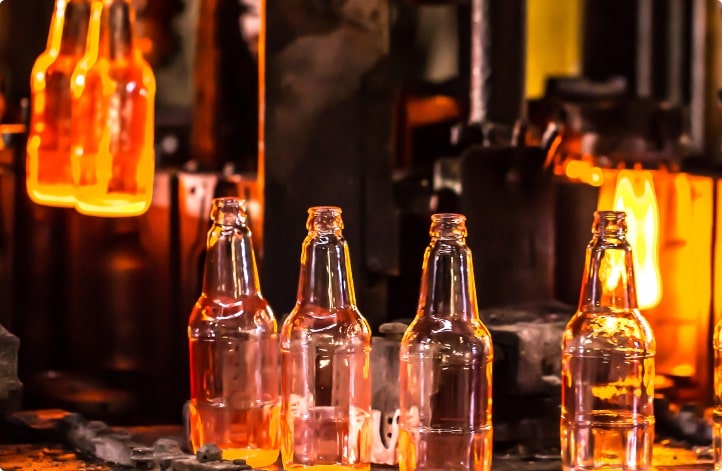Glass industry
Glass belongs to a sustainable future. It is used in a wide range of sectors and is infinitely recyclable. Resistance and transparency are also valuable characteristics.
High levels of electrification are anticipated in the glass industry, with hybrid furnaces potentially achieving up to 80% electrification. To address the remaining energy needs and achieve deep decarbonisation in the sector, it is crucial to have renewable gases available at scale.

Challenge
Glass is one of the most energy-intensive industries, being classified as one of the hard-to-abate sectors for CO2 emissions.
High temperatures,
high energy
The high temperatures of the processes require high levels of energy, making the glass industry vulnerable to the unpredictability and volatility in price of the energy market.


Long-term thinking
The glass industry is used to long-term thinking. Furnaces typically have a lifecycle of 12-15 years and therefore risk becoming outdated due to the continuous and rapid improvements made to equipment used in this industry.
Deep electrification
challenges
Some fully electric equipment is already being tested, but it’s not yet a mature technical solution. Full electrification also brings huge challenges in terms of infrastructure developments.

Our solutions
We are committed to developing long-term and scalable projects that make energy transition a reality for the glass industry
Renewable gases, like biomethane, green hydrogen and green oxygen are the best complementary solutions for deep decarbonisation of glass manufacturing when electrification is not an option. Gas will continue to have an important role in supplying a significative portion of the overall energy needs. Locally produced renewable gases, available at scale, increase the resilience of local plants to energy shortages, energy and carbon market volatility and achieve decarbonisation targets.
REGA ENERGY

